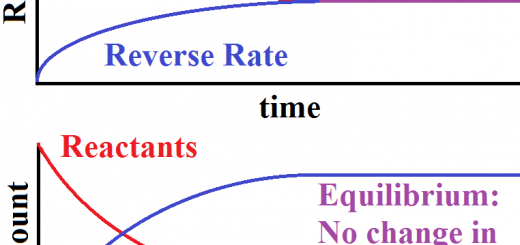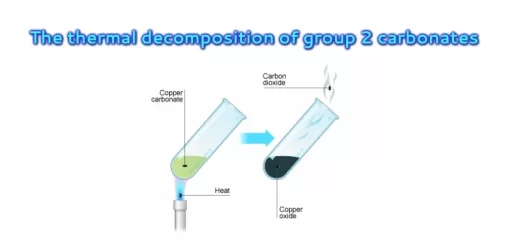Electrolytic cells structure and importance, the difference between Electrolytic cell and Galvanic cell
Electrolytic cells are electric cells in which the electric energy from an external source is converted to chemical energy used through a non-spontaneous oxidation-reduction reaction, The anode is the positive electrode at which oxidation process takes place, The cathode is the negative electrode where the reduction process takes place, The emf is negative sign, such as the cell of aluminum extraction.
Structure of Electrolytic Cells
It is a container contains electrolyte solution (Like solution to any salt, base, acid or molten of any salts) in which two electrodes of the same material (Like carbon or platinum) or each one of them is of a different material (Like carbon, platinum, copper, zinc or others).
One of the electrodes is connected to the positive pole of the battery to become positively charged electrode at which oxidation reactions occur at (anode), The other electrode is connected to the negative pole of the battery and at which reduction reactions occur at (cathode), Electrolytes which are used as ionic conductors in these cells differ from electronic conductors (metals).
When the two electrodes are connected where the applied potential on the cell slightly exceeds the potential of the reversible cell, An electric current in the electrolytic cell flows and the positive ions in the electrolytic solution between the two electrodes are directed towards the negative electrode (cathode) and neutralize their charge by accepting electrons (reduction), The negative ions from the electrolytic solution are directed towards the positive electrode (anode) and neutralize their charge by losing electrons (oxidation).
Electrolytic cell for CuCl2 solution
Electrolysis of copper (II) chloride CuCl2 between two graphite electrodes, Copper (II) chloride solution is ionized as the following:
CuCl2 → Cu2+ + 2 Cl−
When electricity passes, the ions move towards the opposite charged electrodes and the following reactions and the following reactions take place:
The anode (positive electrode) reaction: 2 Cl−→ CLº2 + 2e− , Eº = − 1.36 V.
The cathode (negative electrode) reaction: Cu2+ + 2 e− → Cuº , Eº = + 0.34 V.
The total reaction: Cu2+ + 2 Cl−→ Cuº + CL2
Copper is precipitated at cathode and chlorine is evolved at anode, Cell potential is the sum of the oxidation and reduction potentials of the two half-cells, Cell potential (emf) = − 1.36 + 0.34 = − 1.02 Volt, The negative sign for cell potential means that the total cell reaction occurring is non-spontaneous if it was a galvanic cell but it is completed in electrolytic cell by using electrical energy from an external source.
We can obtain chlorine gas by electrolysis of aqueous solution containing chloride ions because chloride ions are oxidized at the anode producing chlorine gas, The process in which the separation of electrolyte solution constituents is completed (e.g evolution of chlorine and deposition of copper) is called electrolysis, The electrolysis is a chemical decomposition of the substance due to the effect of passing electric current in the electrolyte.
Cathode (−) is the electrode which is connected to the negative pole of the battery, It connects the electrons from outside the circuit to the solution, It conducts the electric current from the solution to outside the circuit, Reduction process takes place at the cathode, “gaining electrons”, It gains electrons from the external circuit (battery), and it attracts positive ions (cation).
Cu2+ + 2 e−→ Cu
Anode (+) is the electrode which is connected to the positive pole of the battery, It connects the electrons from the solution to the outside circuit, It connects the electric current from the outside circuit to the solution, The Oxidation process takes place at the anode, “losing electrons”, It losses electrons to the external circuit (battery), and it attracts negative ions (anions).
2 Cl−→ CLº2 + 2e−
When the electric current passes through the electrolyte.
- The positive ion (cation) moves towards the negative electrode (cathode).
- The negative ion (anion) moves towards the positive electrode (anode).
Electrolysis of NaCl solution: 2NaCl + 2 H2O → 2 NaOH + H2 + Cl2
Electrolysis of NaCl molten: 2NaCl → 2 Na + Cl2
The oxidation-reduction reactions which happen inside the electrolytic cell are considered as a non-spontaneous reaction because it can not be done without using electric current.
The difference between the electrolytic cell and the galvanic cell
The electrolytic cell converts the electric energy to chemical energy, The anode is the positive electrode in the cell where the oxidation process takes place at it, The cathode is the negative electrode in the cell where the reduction process takes place at it, The oxidation-reduction reactions are non-spontaneous (need an external electric source), It needs an external electric source, It does not need salt bridge, The two electrodes may be similar or different.
The galvanic cell converts the chemical energy to electric energy, The anode is the negative electrode in the cell where the oxidation process takes, The cathode is the positive electrode in the cell where the reduction process takes place at it, The oxidation-reduction reactions are spontaneous (does not need an external electric source), There is no external source, It needs salt bridge, The two electrodes should be different, and there is a potential difference between them.
Corrosion causes, Protection of metal against corrosion, Mechanism of iron and steel rusting



